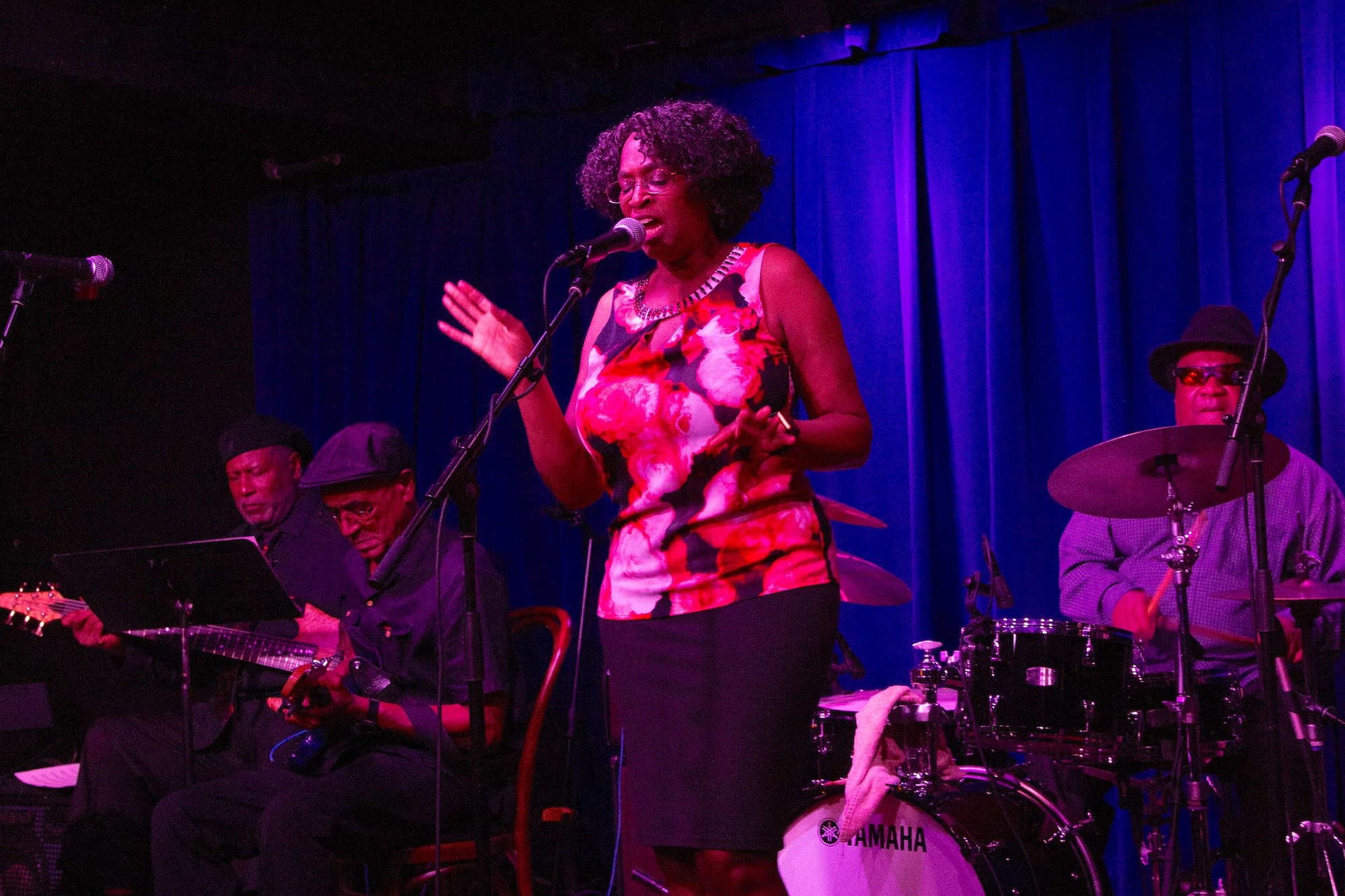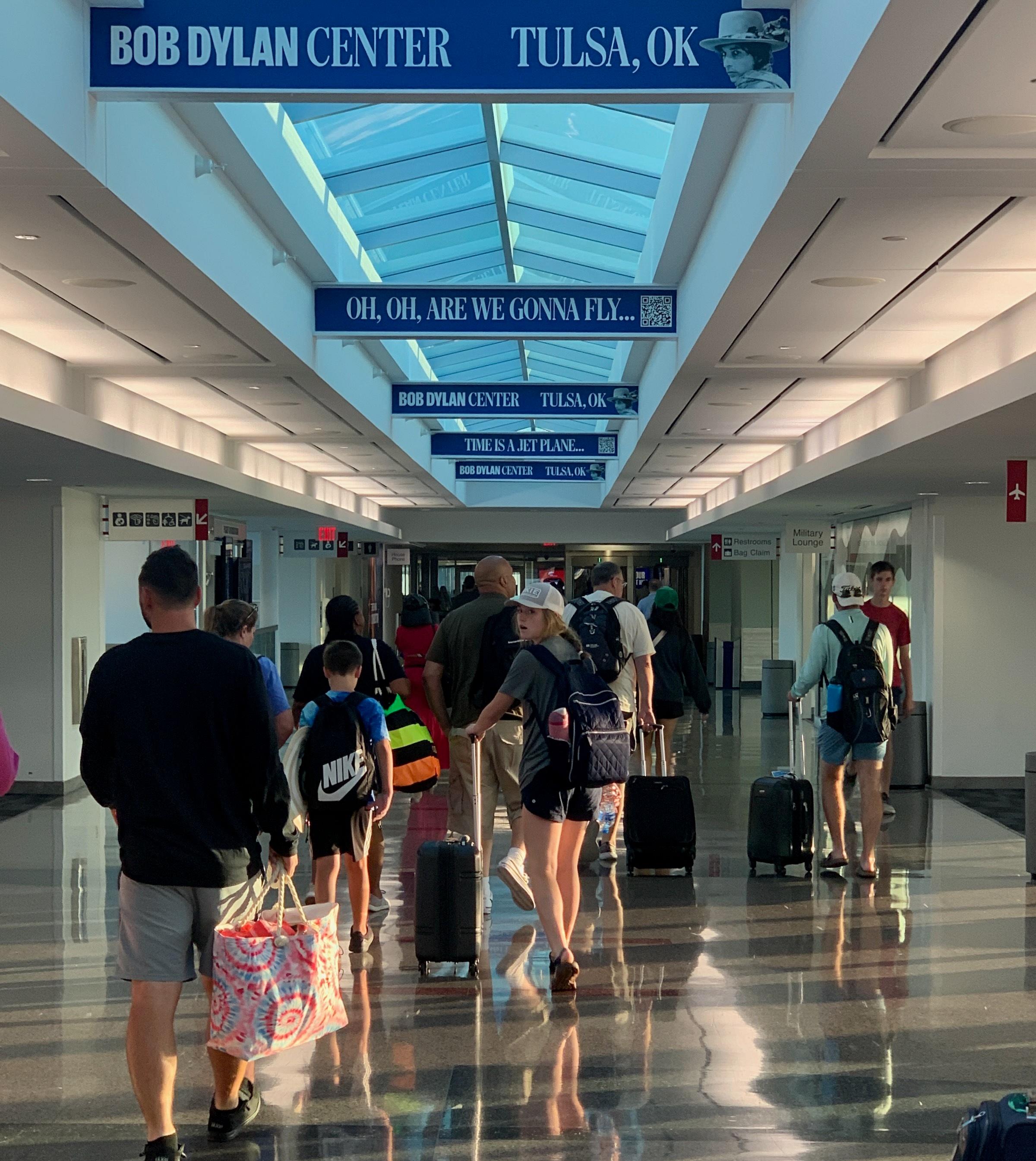
Tulsa — As a touring folk-country singer-songwriter’s band kicked into gear, a regular pointed to a stuffed possum wrapped in Christmas lights suspended over the bar. The possum, he said, had a backstory.
As I spoke, I knew we’d come to the right place.
We had heard something was happening worth checking out in Tulsa, a vibrant scene full of rootsy music, local personality, ambitious art, cherished traditions (including taxidermic barroom decor), all wrapped in a spirit of fun and ambition. It was true.
We came to Tulsa on a three-person family scouting mission in advance of the launch of a new project here at the Independent called The Independent Review Crew. The project’s mission: To try to figure out how to revive regular in-person reviewing of local concerts, plays, and gallery shows across the United States.
We do that daily in New Haven at the Independent. In most other cities with vibrant cultural scenes, local media offer previews and features about the arts, but rarely anymore do reviewers show up, document what happened, and offer their own take. That’s a loss: These live events matter because they tap into the soul of a community, bringing people together from different backgrounds, sharing dreams and memories, joy and heartache and perspectives, in the quest for common purpose and meaning. Documenting them for everyone to read gives us all a chance for a deeper understanding of where we live, and a clearer articulation of a vision for the future.
So for the past months we have been looking for communities and budding reviewers to create a network of “fellows” and freelancers with an eye toward experimenting with different approaches to building local readerships.
Mostly we’ve connected with people or places we knew. We didn’t know about Tulsa. But we kept hearing about Tulsa: The “next Austin,” where musicians and artists are flocking to build on an exciting historic tradition. So we reserved airline tickets and an Airbnb to try to find out.
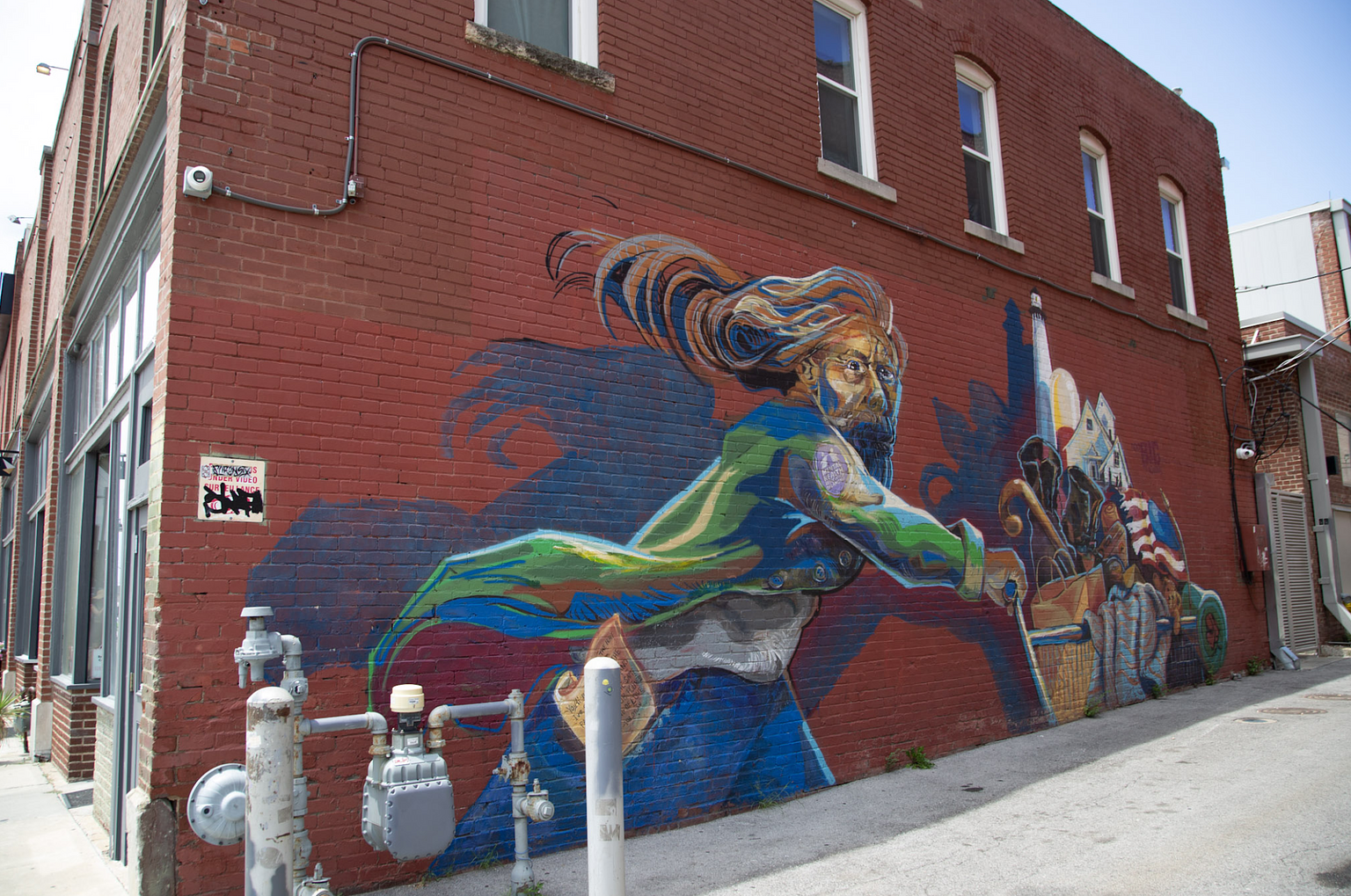
In the course of a visit to Tulsa last week, we encountered a city full of striking murals …

… with a jam-packed monthly art crawl, as many as nine concerts a night in the middle of the week (not counting open mics) …
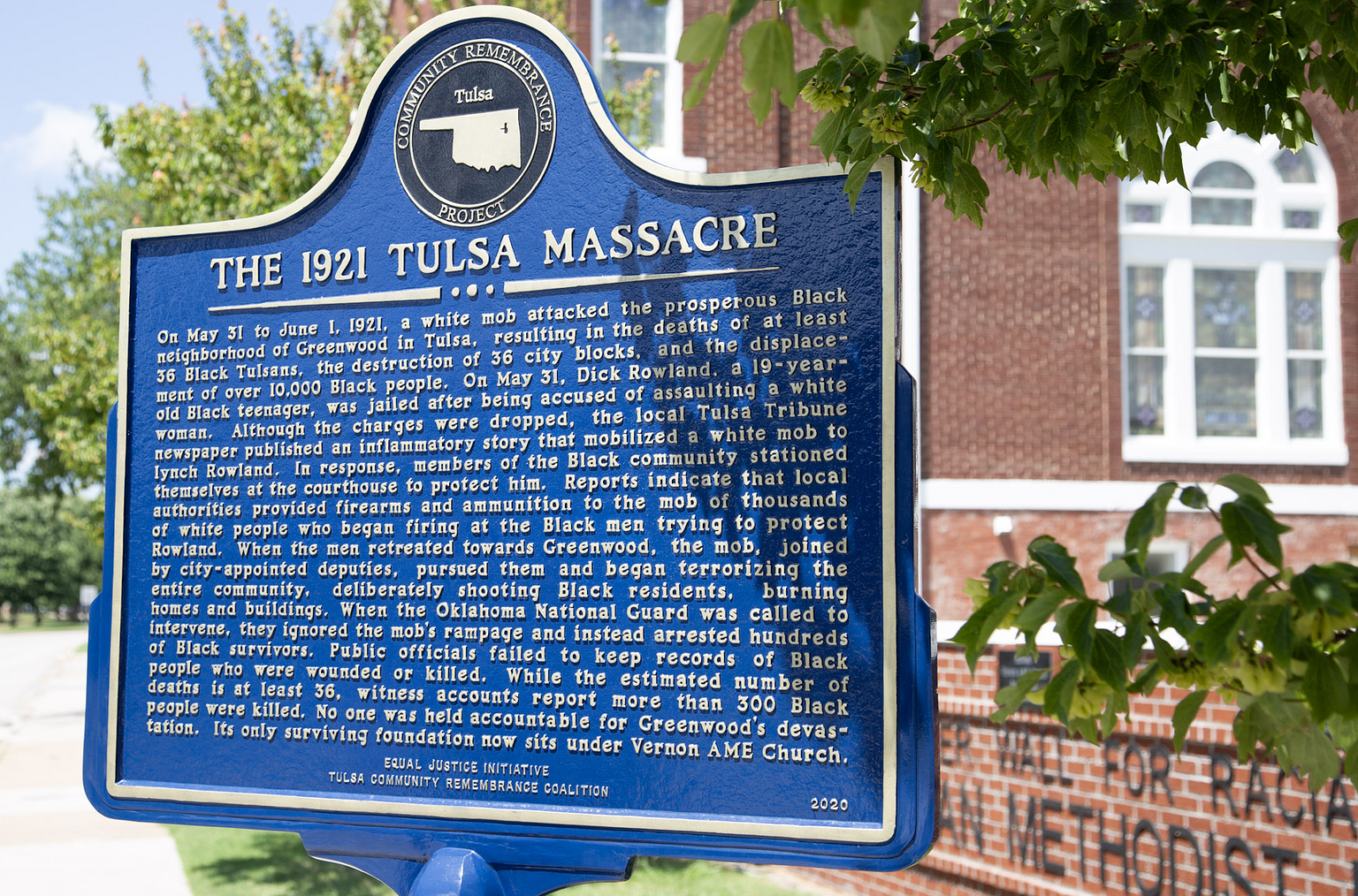
… against the backdrop of a painful communal reckoning with one of the worst incidents of mass violence against Black people in U.S. history, the 1921 Greenwood Massacre.
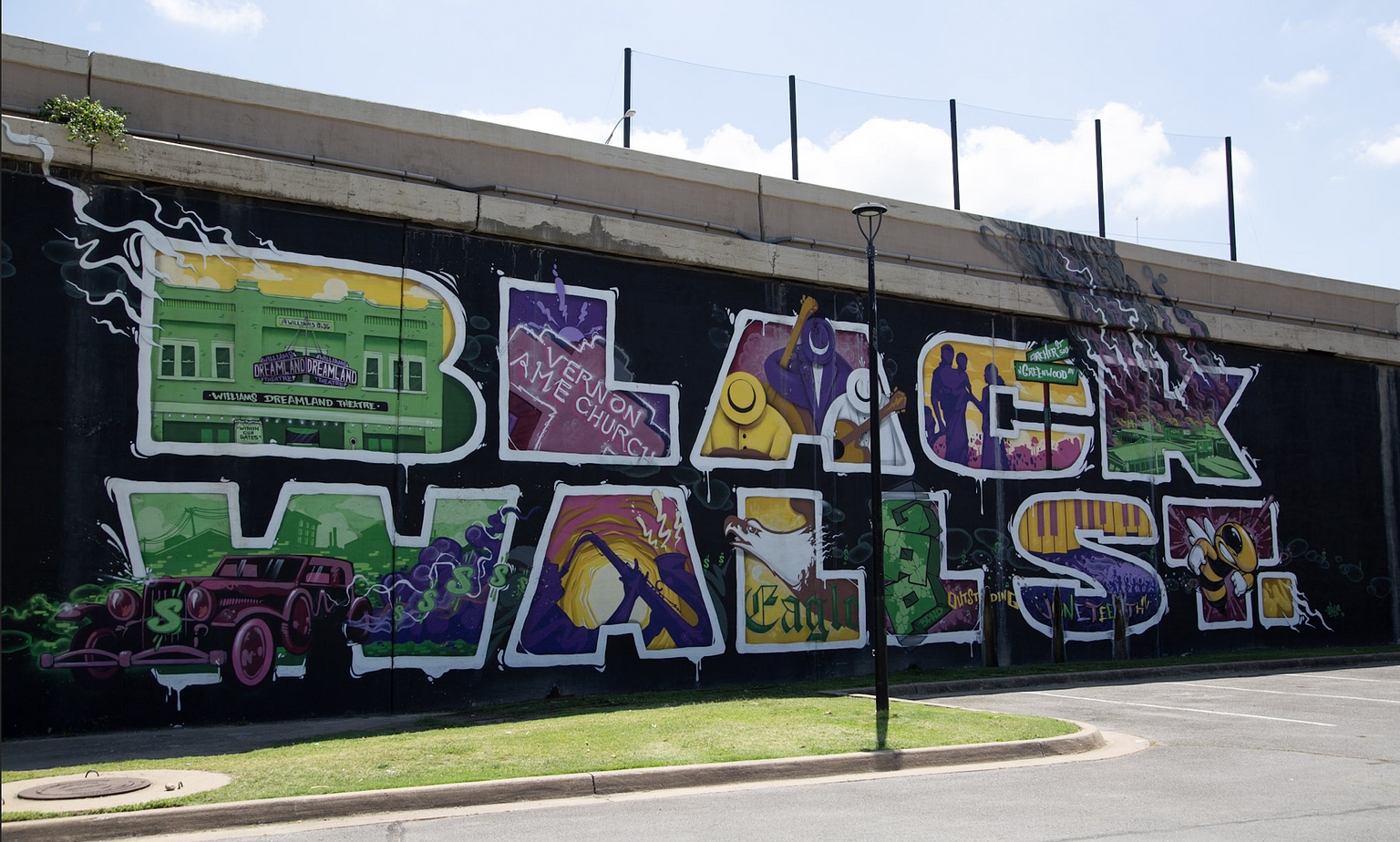
A white city-sanctioned mob destroyed the prosperous Greenwood district, a.k.a. “Black Wall Street,” burning down the buildings, murdering hundreds of people, and confining others to internment camps for as long as 18 months, destroying a thriving Black commercial and residential neighborhood.
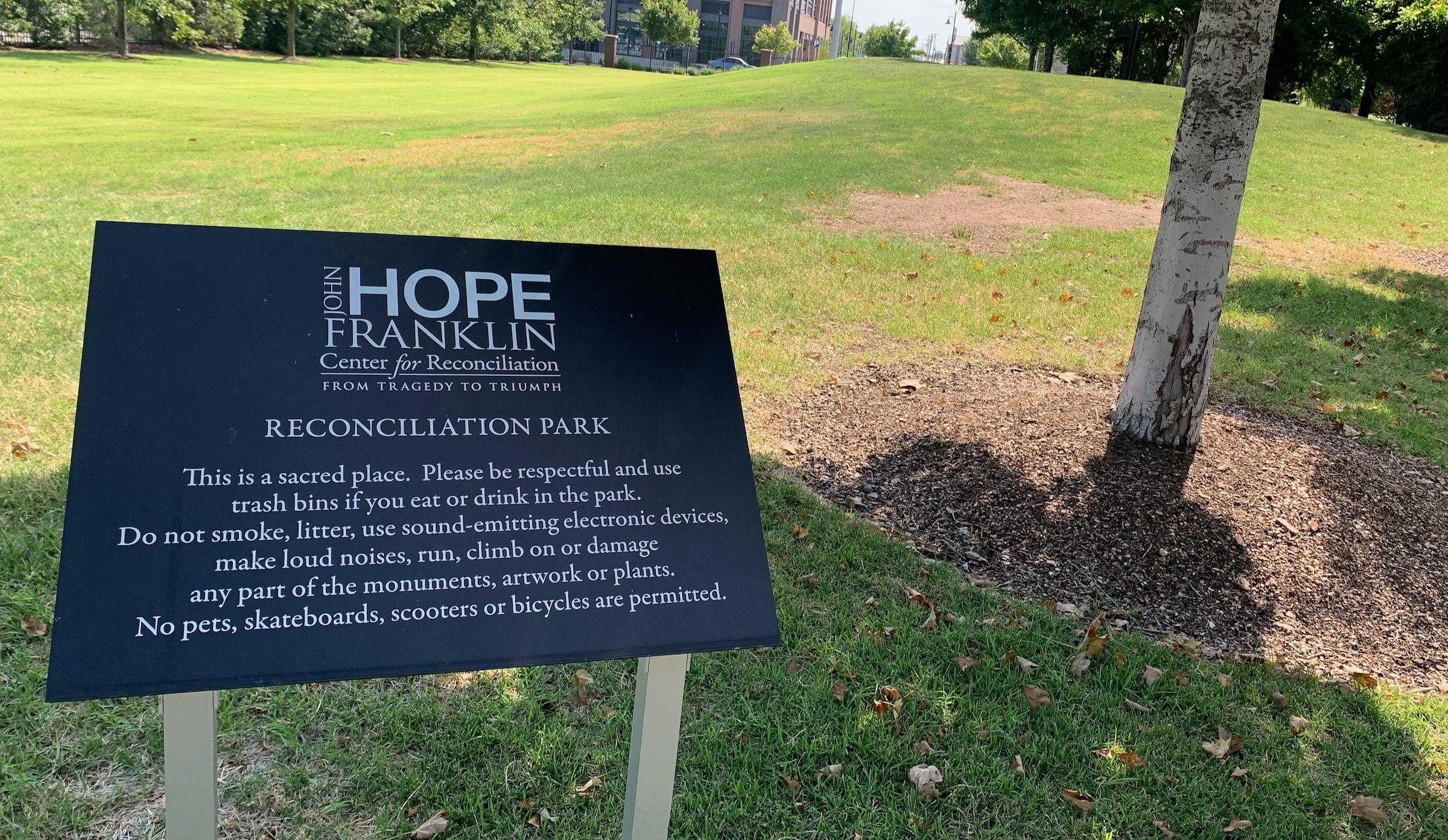
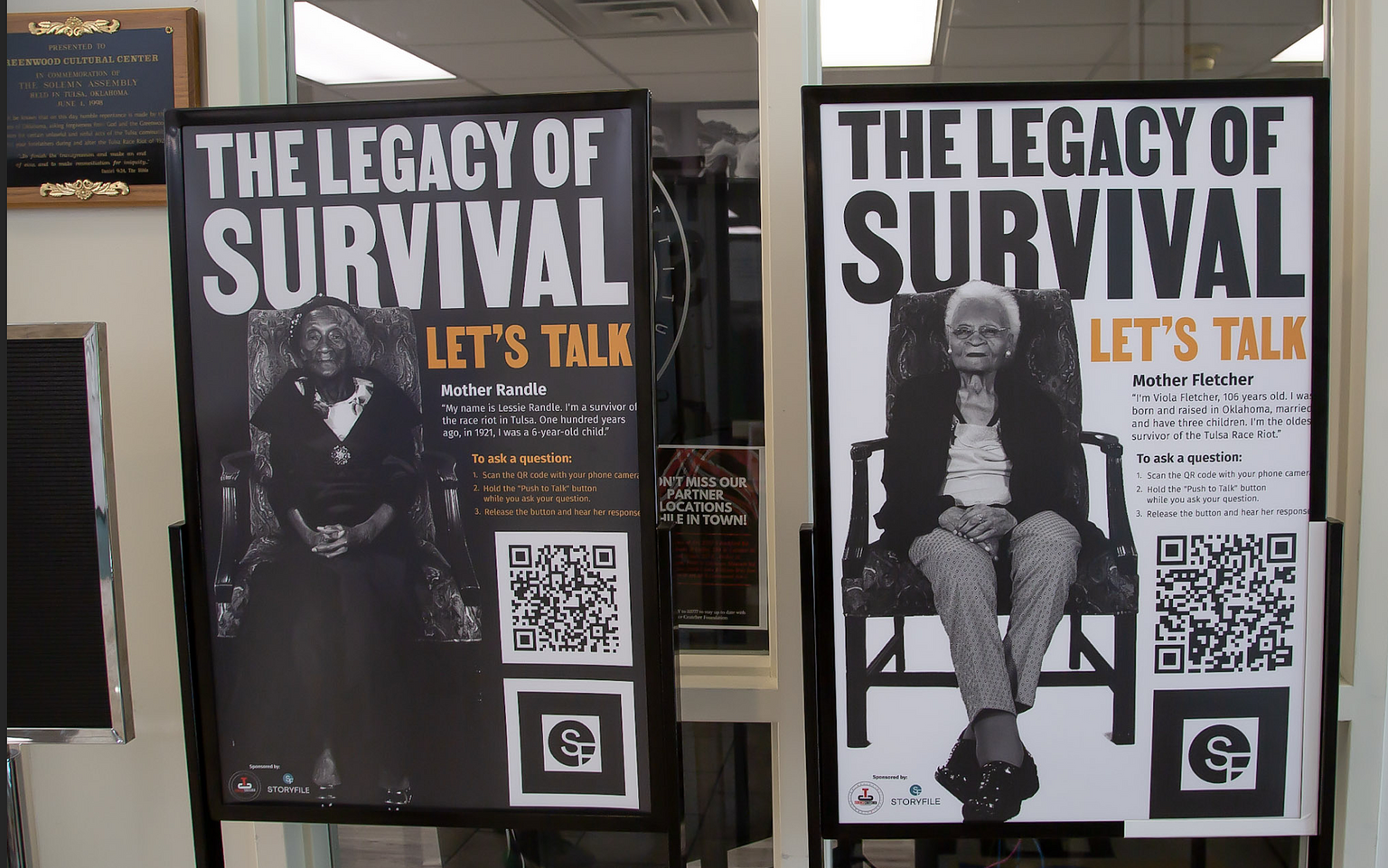
The city and state government ignored the massacre for nearly a century, despite several campaigns over the intervening decades from Tulsa’s Black community to keep the memory of the massacre alive and demand reparations to survivors who had lost relatives, livelihoods, and property. Now you see reminders everywhere, from public plaques to a “reconciliation park” to a Greenwood center (pictured above) dedicated to preserving the story.
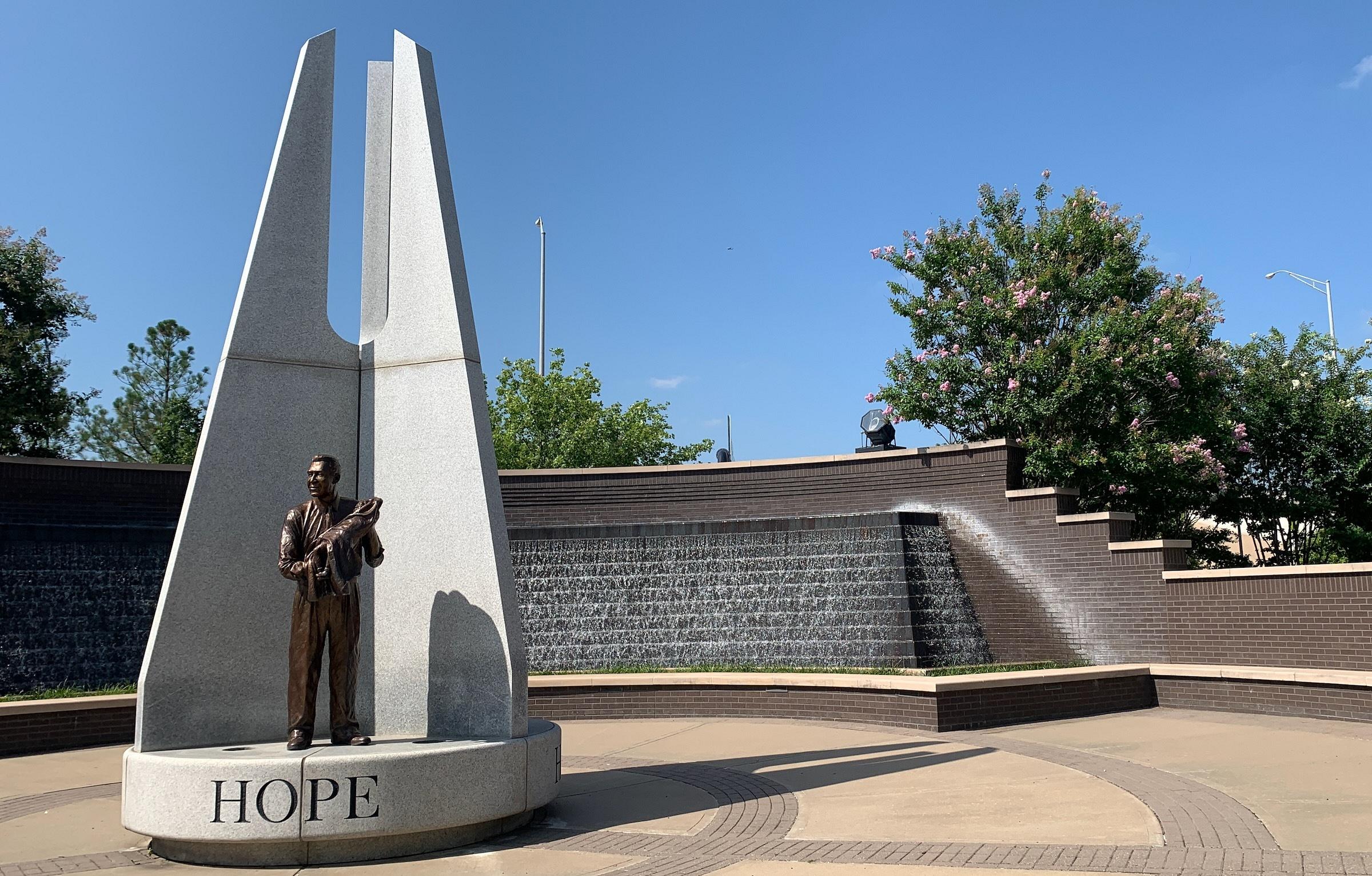
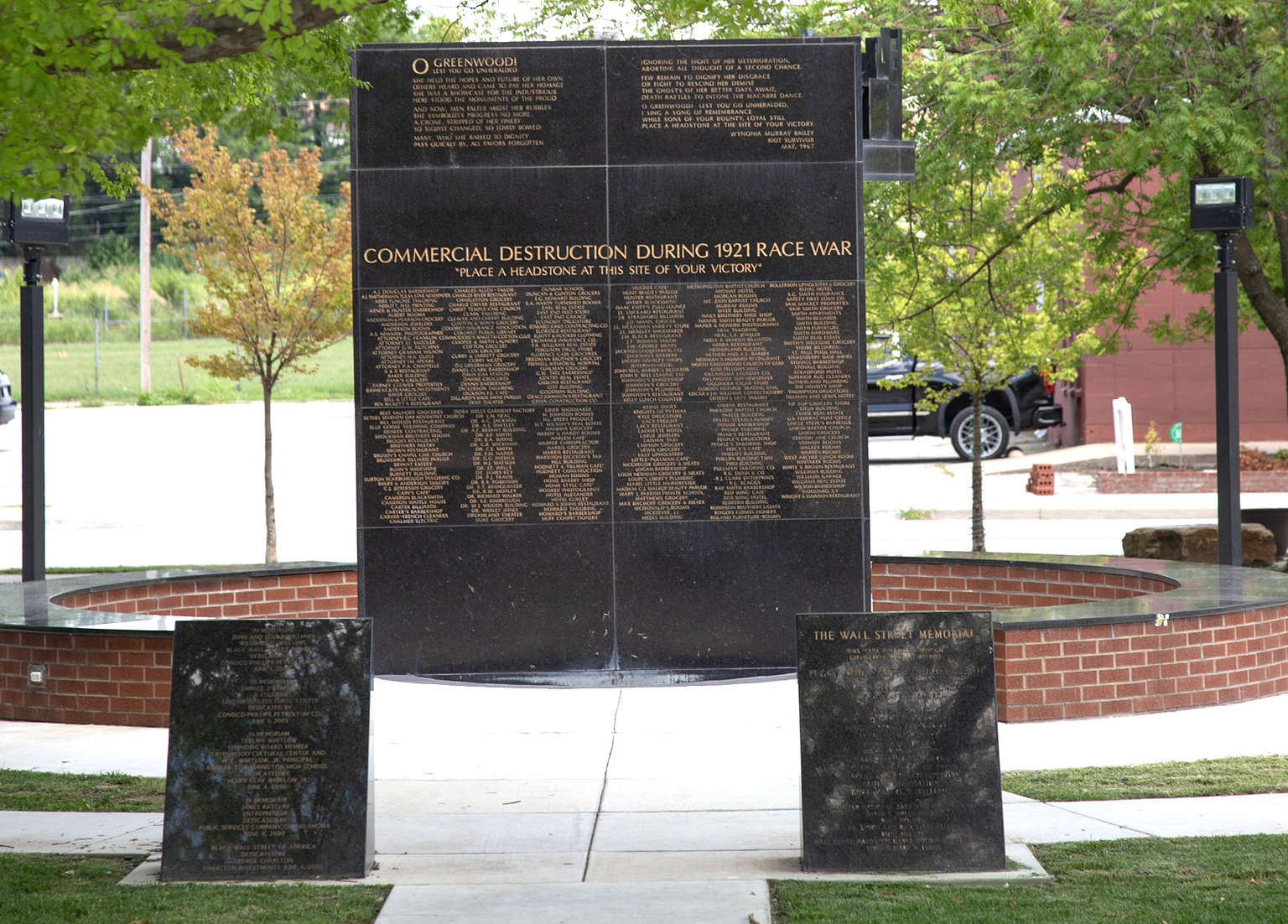
The massacre and its legacy creep into practically every conversation. A gripping new book about it, by Victor Luckerson, is bound to help continue that reckoning at the national level — a reckoning that began when Tulsa’s city government fully acknowledged the massacre on its 100th anniversary and articles about it appeared in several major news outlets and in popular culture, such as HBO’s Watchmen miniseries — even as in Tulsa itself, the Tulsa Opera decommissioned a piece about the massacre for its critical tone.
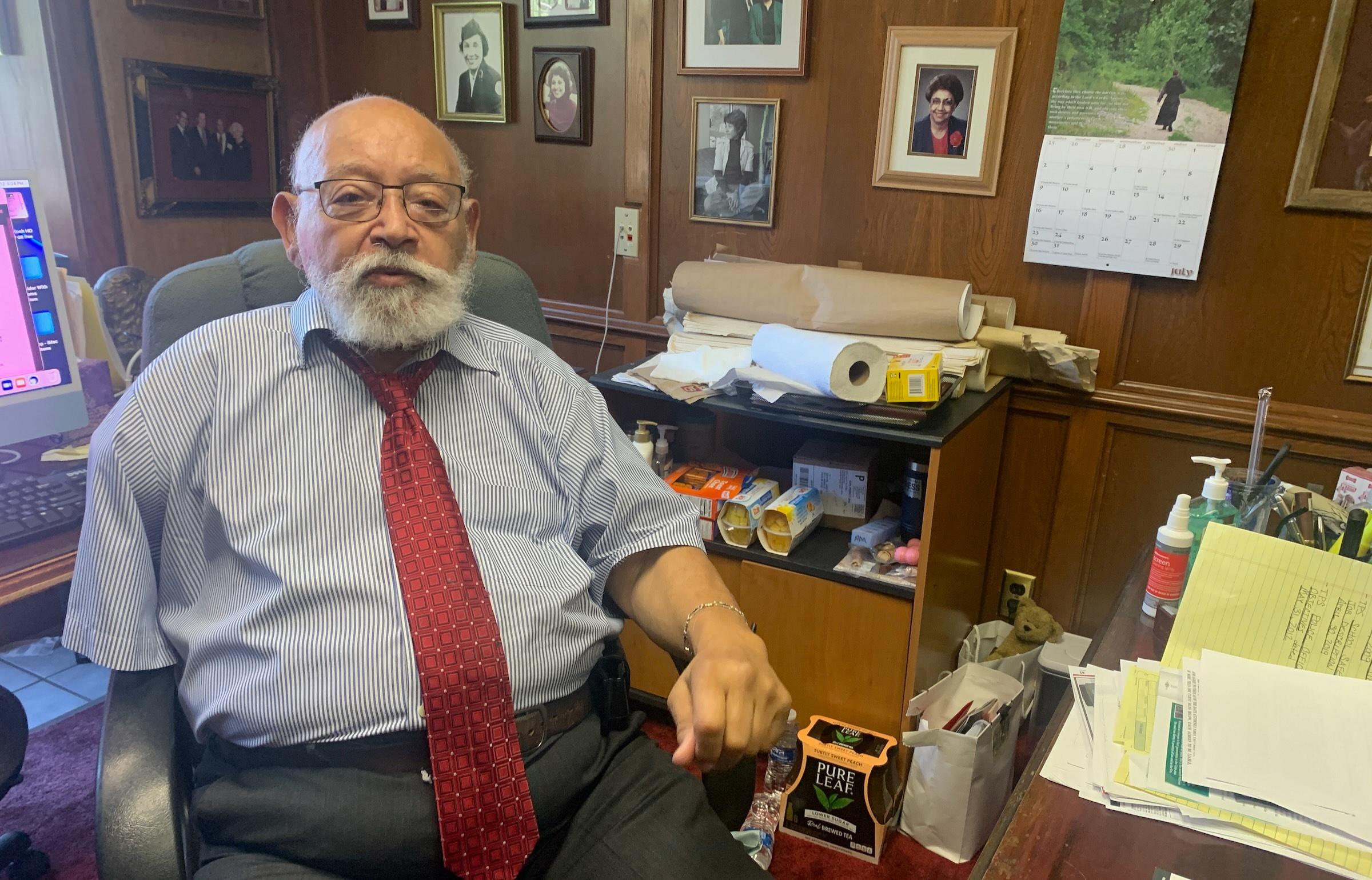
People like James Goodwin (pictured) keep up the fight. Goodwin’s family helped build up the original Greenwood District, then rebuild it, then fought to salvage it after Urban Renewal and an interstate highway wreaked a second round of existential destruction. At 84, Goodwin still practices law and serves as the third-generation publisher of his family’s 100-year-old weekly Black newspaper, the Oklahoma Eagle. He and his niece, State Rep. Regina Goodwin, are working to have a portion of the interstate towering over his office torn down (as New Haven and some other cities have done) to make room to stitch back the neighborhood with community-oriented development.

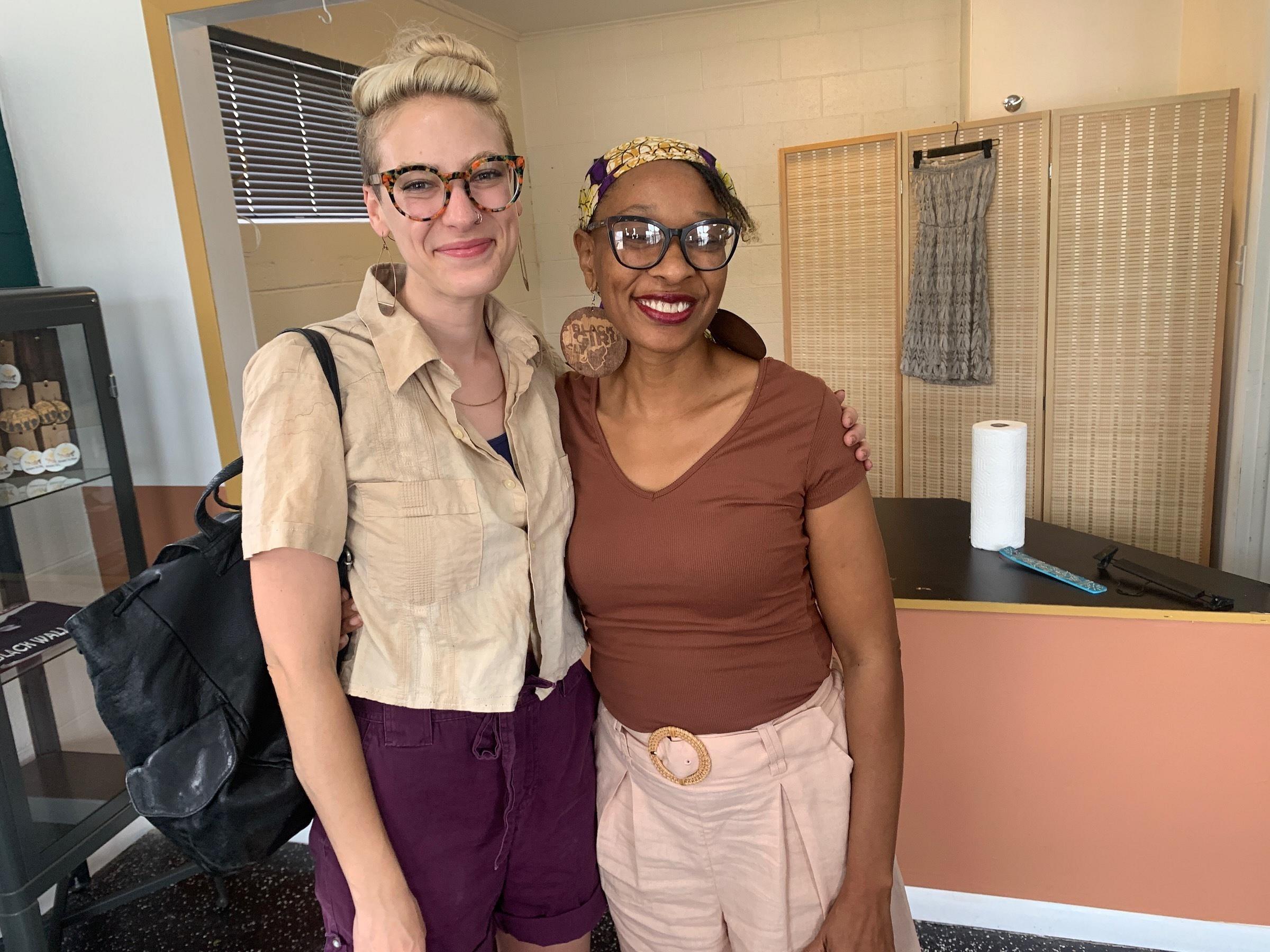
On East 15th Street, D’Marria Monday (at right in photo, with Sarah Bass) runs a thrift store called Return To Hope. It’s part of a nonprofit she co-founded to provide housing, shelter, and reentry guidance for women emerging from prison in a state with the U.S.’s highest female incarceration rate. Monday also organized a grassroots campaign that helped Rep. Goodwin pass a law ending the practice of shackling pregnant inmates during childbirth.
Thousands of people are moving to Tulsa each year. The George Kaiser Family Foundation — the biggest local charity, which funds pretty much every major project in town, including a $480 million family-oriented 66-acre park called the Gathering Place — has paid some people $10,000 to move here. Some new arrivals are remote tech workers enticed by the lower cost of living (13 percent lower than the national average). Some have come because of deliberate efforts to build a diverse cultural community, including an arts fellowship program similar to New Haven’s NXTHVN. Other new arrivals are immigrants resettled by a welcoming synagogue we visited called Congregation B’nai Emunah. The synagogue operates an eight-person-staffed agency that serves as Tulsa’s version of New Haven’s IRIS, a federally approved team to resettle refugees. Three were arriving the week we visited, from Syria, Afghanistan, and Myanmar.
Meanwhile, as part of that reckoning, a thriving cultural district has emerged on the adjacent blocks west of the old Greenwood Avenue/Black Wall Street, including along a thoroughfare renamed Reconciliation Way. It was previously named after a white-supremacist civic leader who played a role in Greenwood’s destruction. During our visit we met journalists who bemoaned the disappearance of outlets to publish reviews of all the cultural events taking place. As in other cities I’ve been monitoring, Tulsa’s alternative weekly closed down, and the print daily newspaper pretty much stopped publishing reviews (as opposed to arts previews and features).
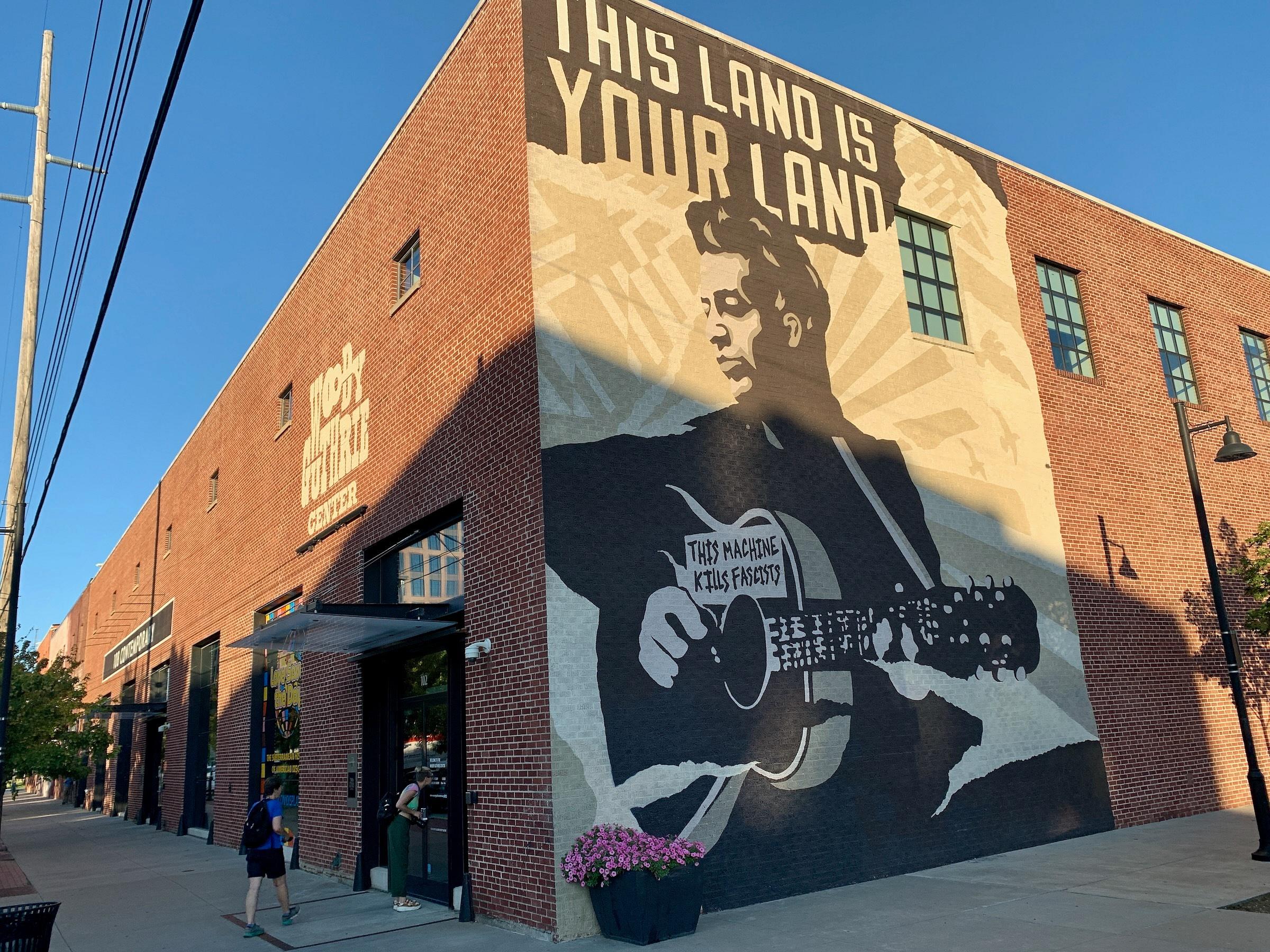
In the cultural district, Tulsa created a Woody Guthrie museum honoring the crusading Oklahoma-born folksinger. The center gave its annual award this year to Pussy Riot, which came to play a concert. On his 111th birthday last week, a special exhibit charted the racial and social undercurrents of the rise and fall of disco. It all made sense.
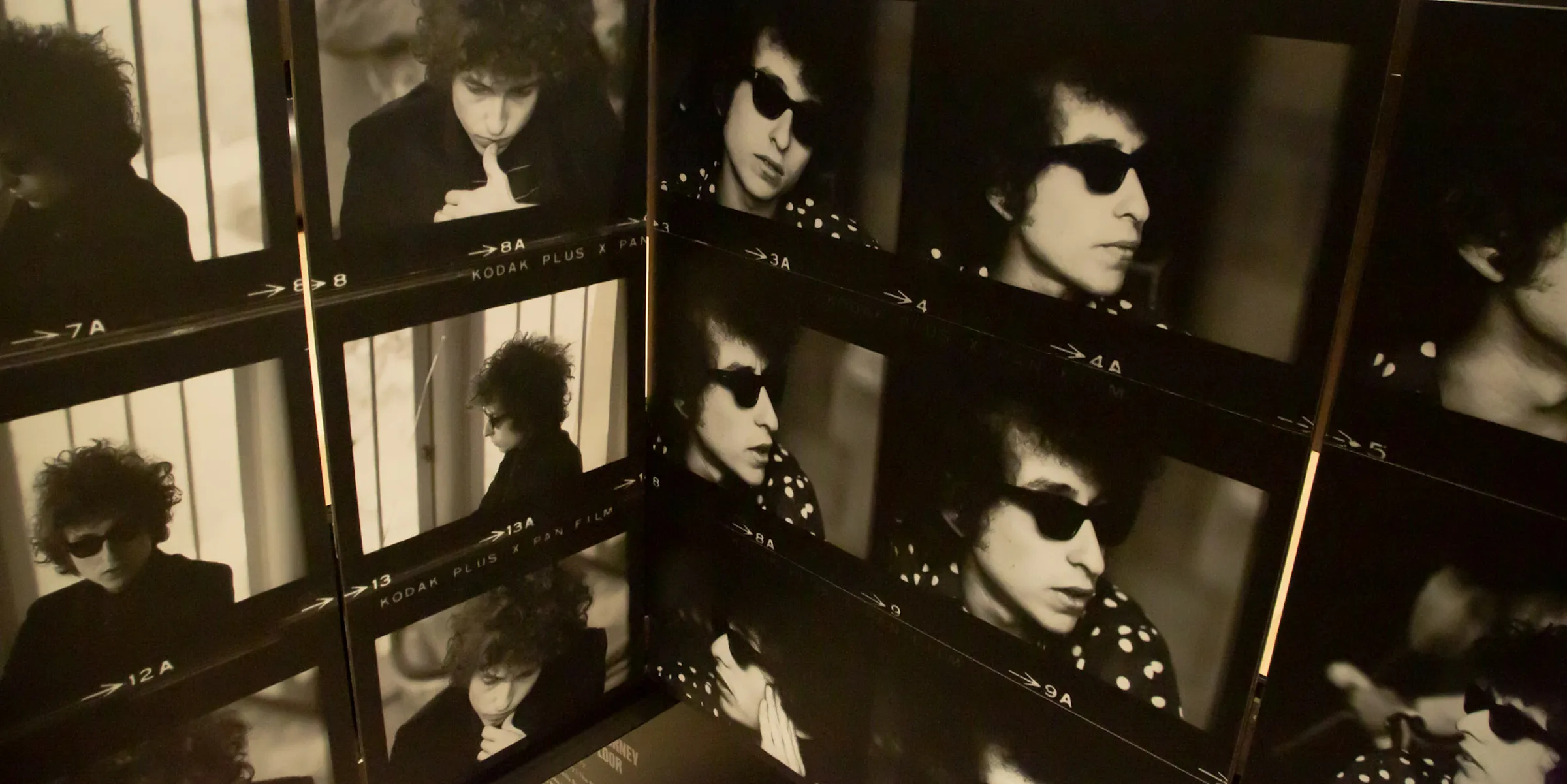
A Bob Dylan Center museum opened next door last year. Dylan chose Tulsa as the recipient of his archives, and they’ve run with the gift, with immersive multimedia deep dives into the phases of career.
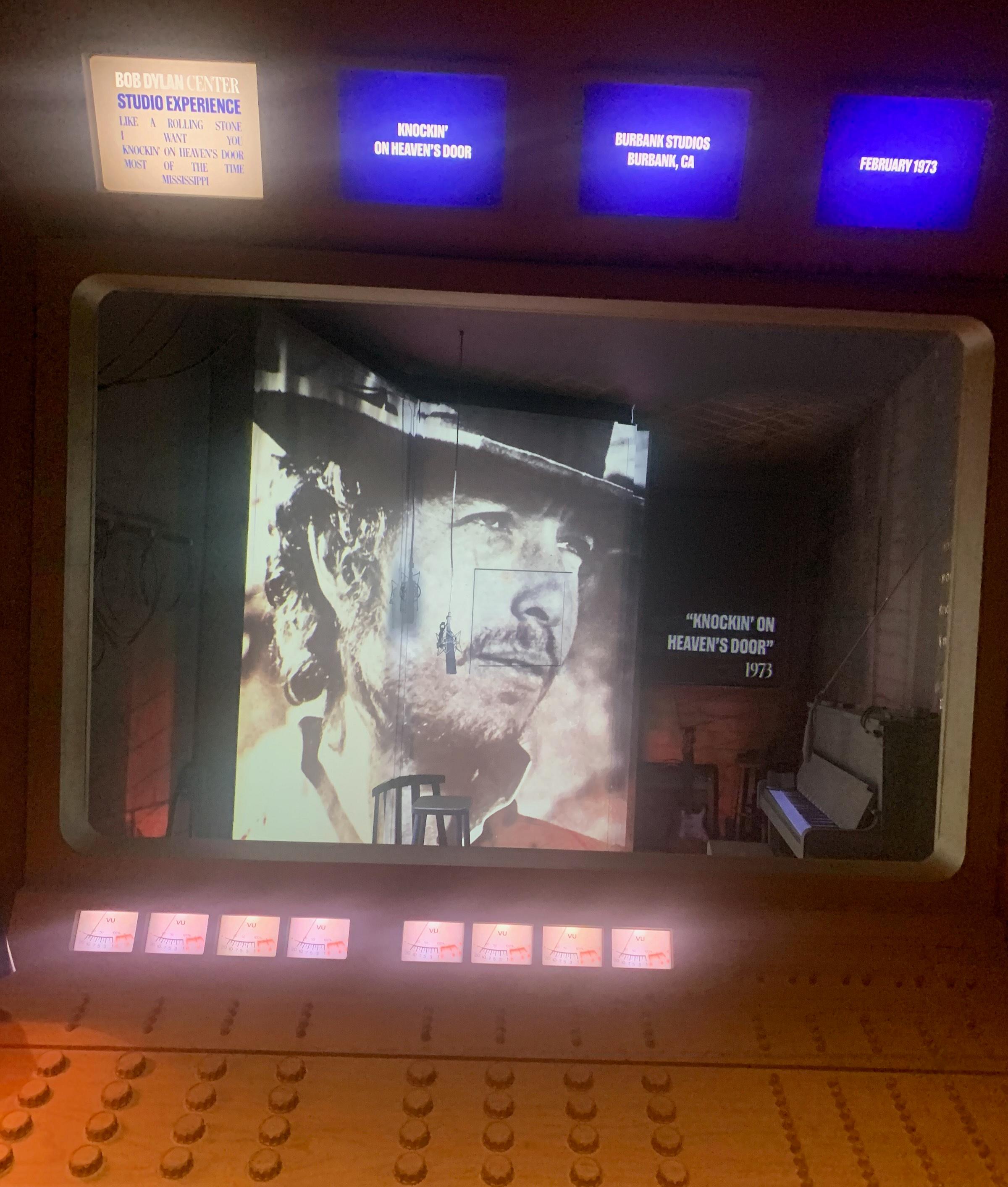
A mock studio brought us into a real studio where Dylan struggled to hit the right approach for his song “Most of the Time” while recording his career-reviving 1989 album Oh Mercy! under the inspired guidance of producer Daniel Lanois. Dylan finally figured out that the song was about a clock, not about the singer, so he adjusted the feel to resemble a clock; Lanois deliberately waited for Dylan to figure out the core of the song before bringing in the haunting bass and dramatic rising-and-falling rhythm electric guitar parts that created a masterpiece.
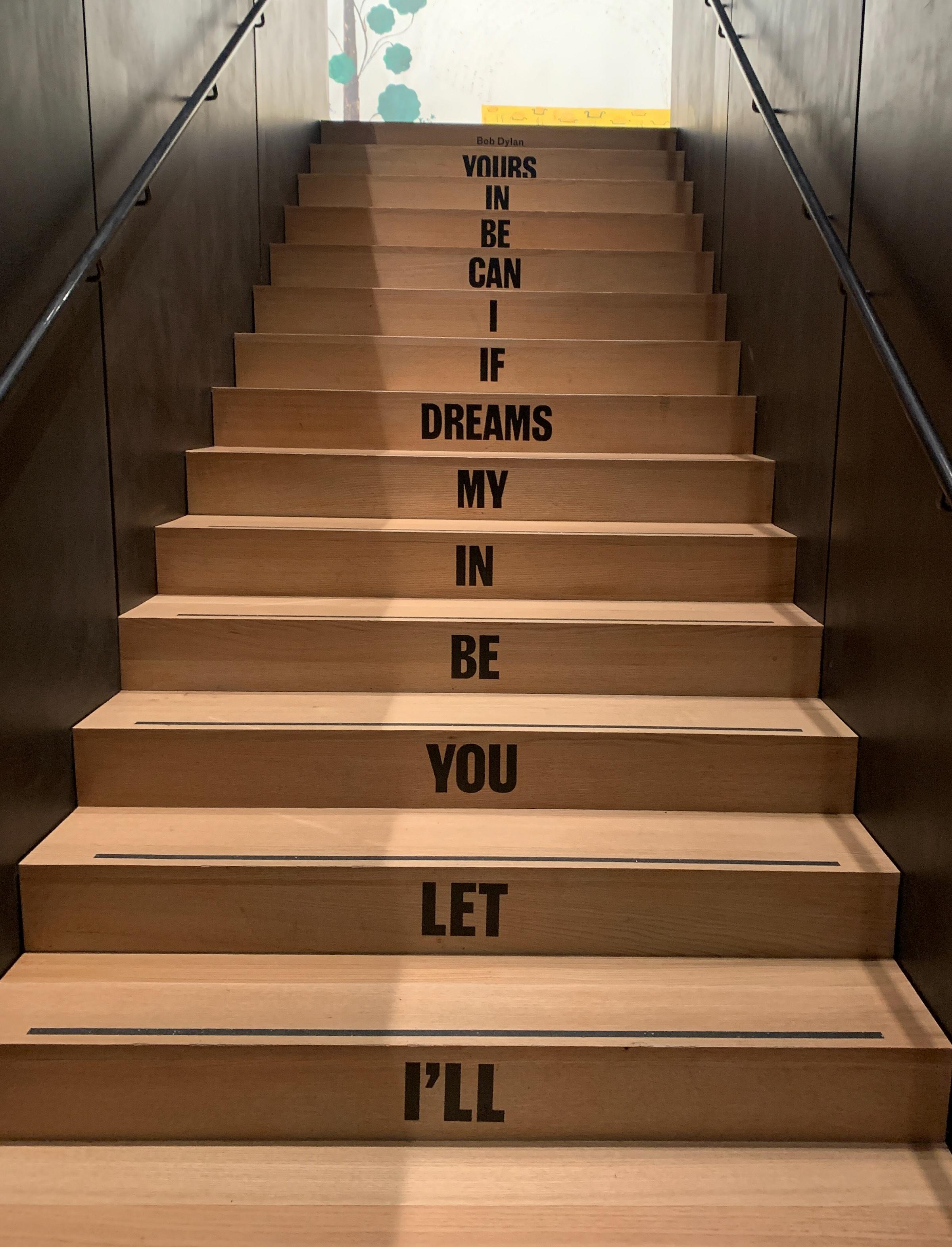
The stairs leading up to the second-floor collection of Dylan paintings and movie clips invite the visitor to climb into one of his memorable lyrics step by step. Dylan himself played a concert in Tulsa the month before his museum opened. He didn’t pop in (and hasn’t since). He did visit the Guthrie museum and catch a Tulsa Oilers game in the double‑A baseball stadium built across the street.
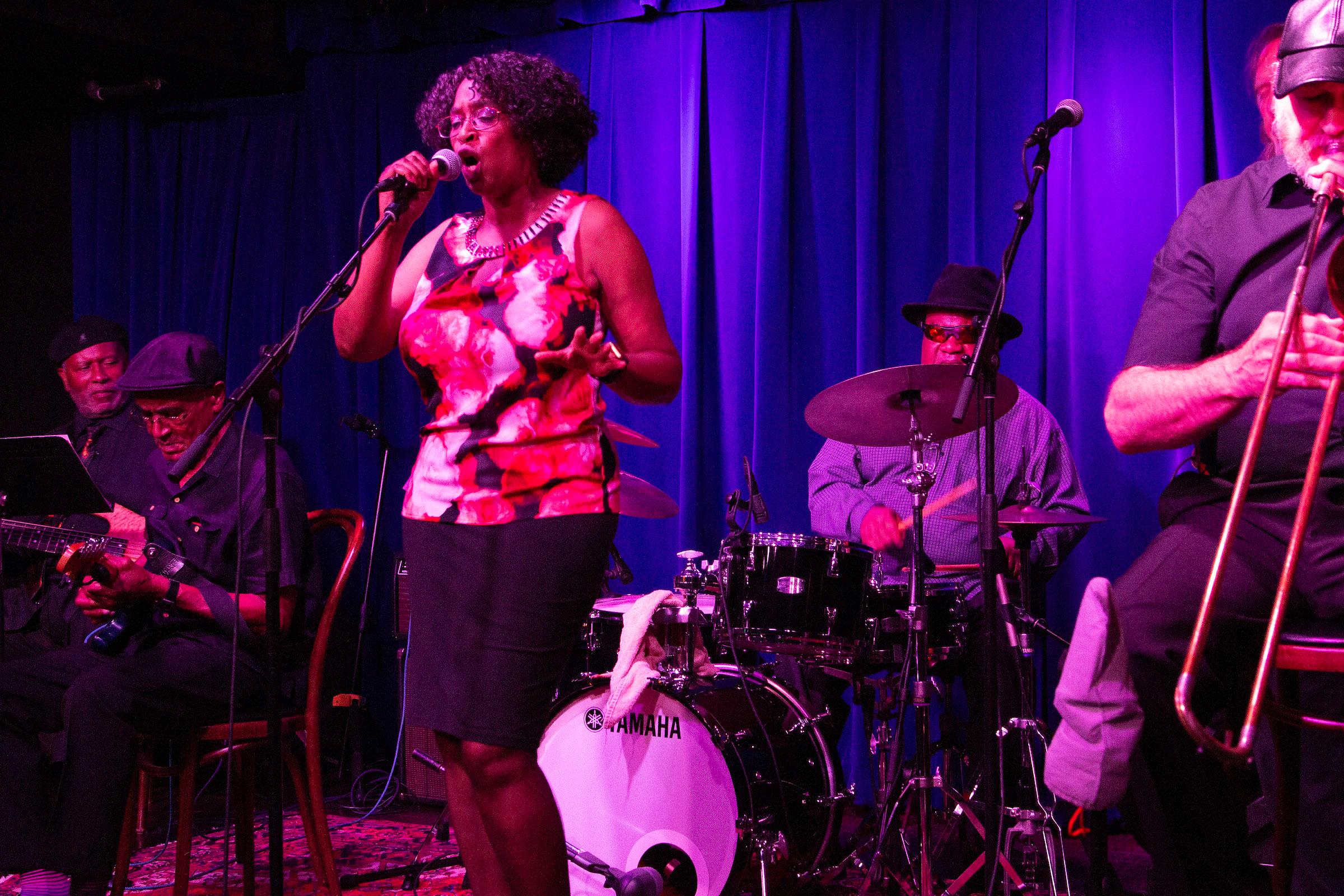
Around the corner, we popped into a subterranean jazz club called the LowDown. The act that night was paying tribute to Leon Rollerson, a Jazz and Blues Hall of Fame bandleader (and journalist) who died recently. Vocalist Victoria Elling had the mic …

… the band wore black …
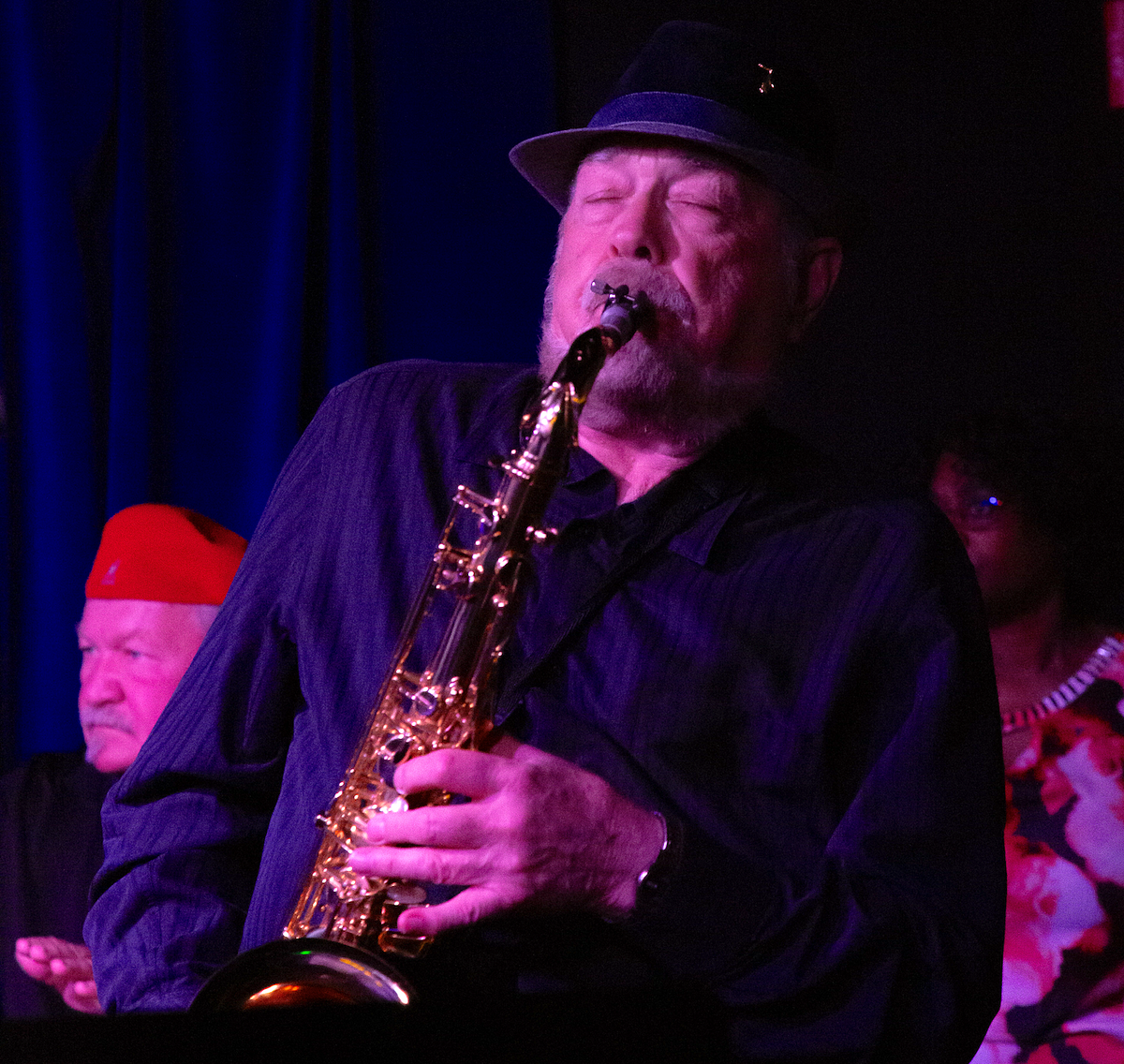
… and Jerry Smoot smoked the sax.
Click on the video for a sample.
Highlights of the evening included a faithful while improvisational rendition of Leon Russell’s “A Song for You“ and a rousing take on the GAP Band’s “Oops Up Side Your Head Head.” Left unmentioned was that both Russell and GAP proudly hailed from Tulsa, the latter named after the Black historic district’s Greenwood, Archer and Pine streets.
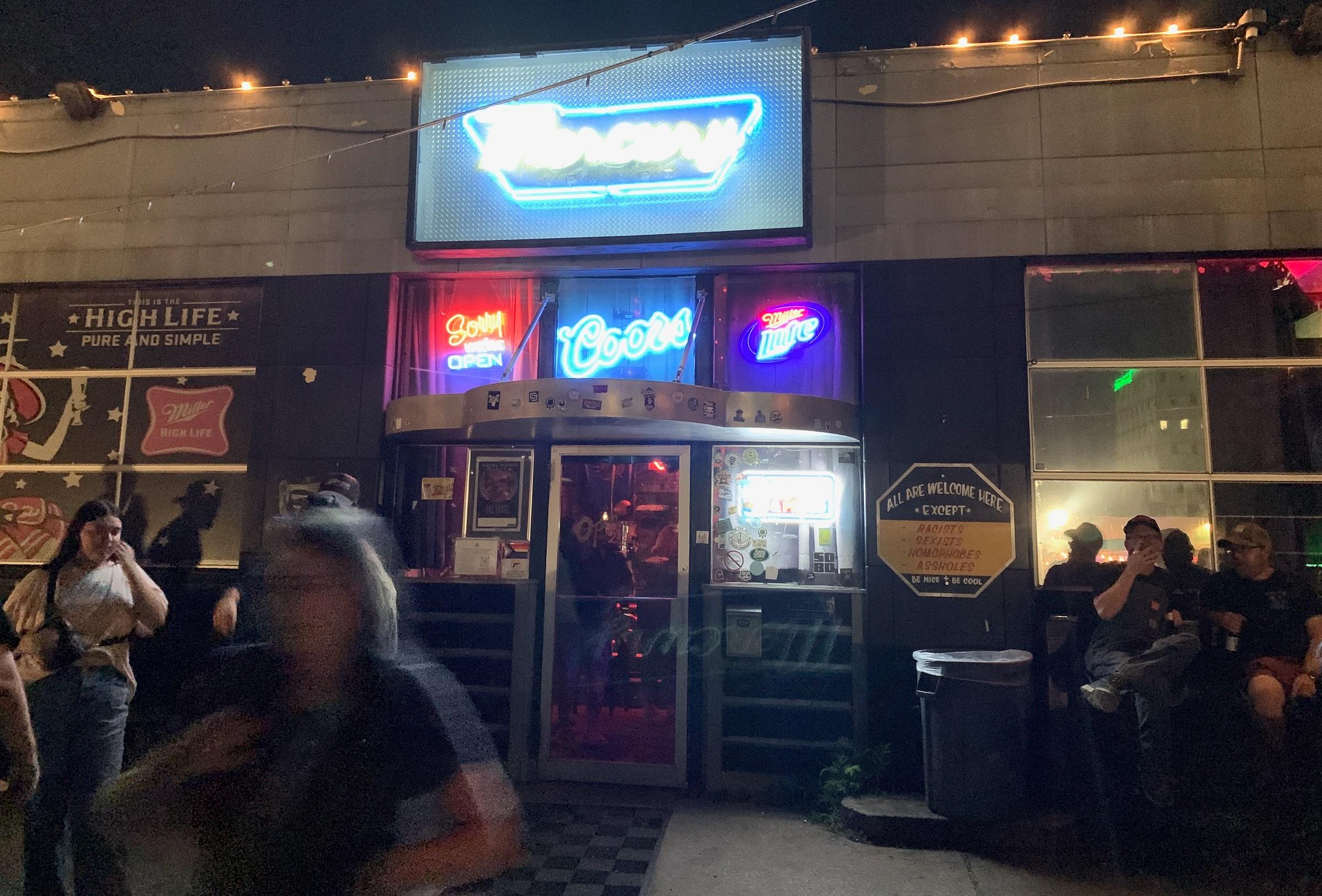
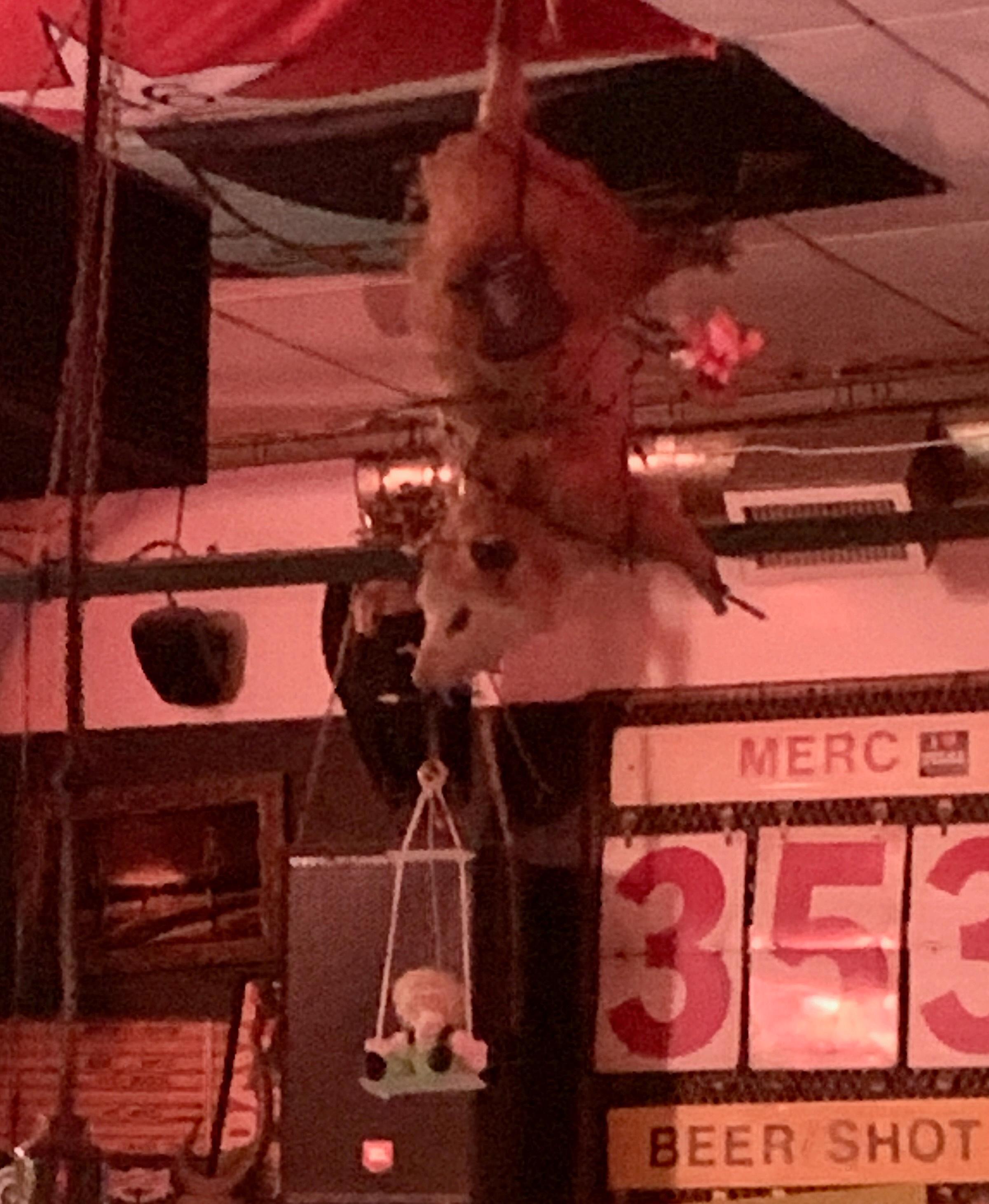
We encountered the suspended possum a couple miles south inside the Mercury Lounge. The bar, about 50 percent bigger than New Haven’s Cafe 9 with a similar relaxed and homey vibe, has live music seven nights a week. Like Cafe 9, it draws touring indie recording artists like folk-country songwriter Chris Knight, who appeared with his five-person combo the night we visited.
A beefy, bearded bouncer known as Big Fish was working the door. He pointed to the yarmulke on my head as we paid to enter.
“As a member of the tribe,” he said, “I appreciate your wearing a kippah.” He proceeded to point out the Star of David tat on his knuckle.
“If anybody fucks with you,” he deadpanned, “I’ll fuck ‘em up.”
The sign by the entrance confirmed that maybe he wasn’t joking: “All are welcome in except racists, sexists, homophobes, assholes.”
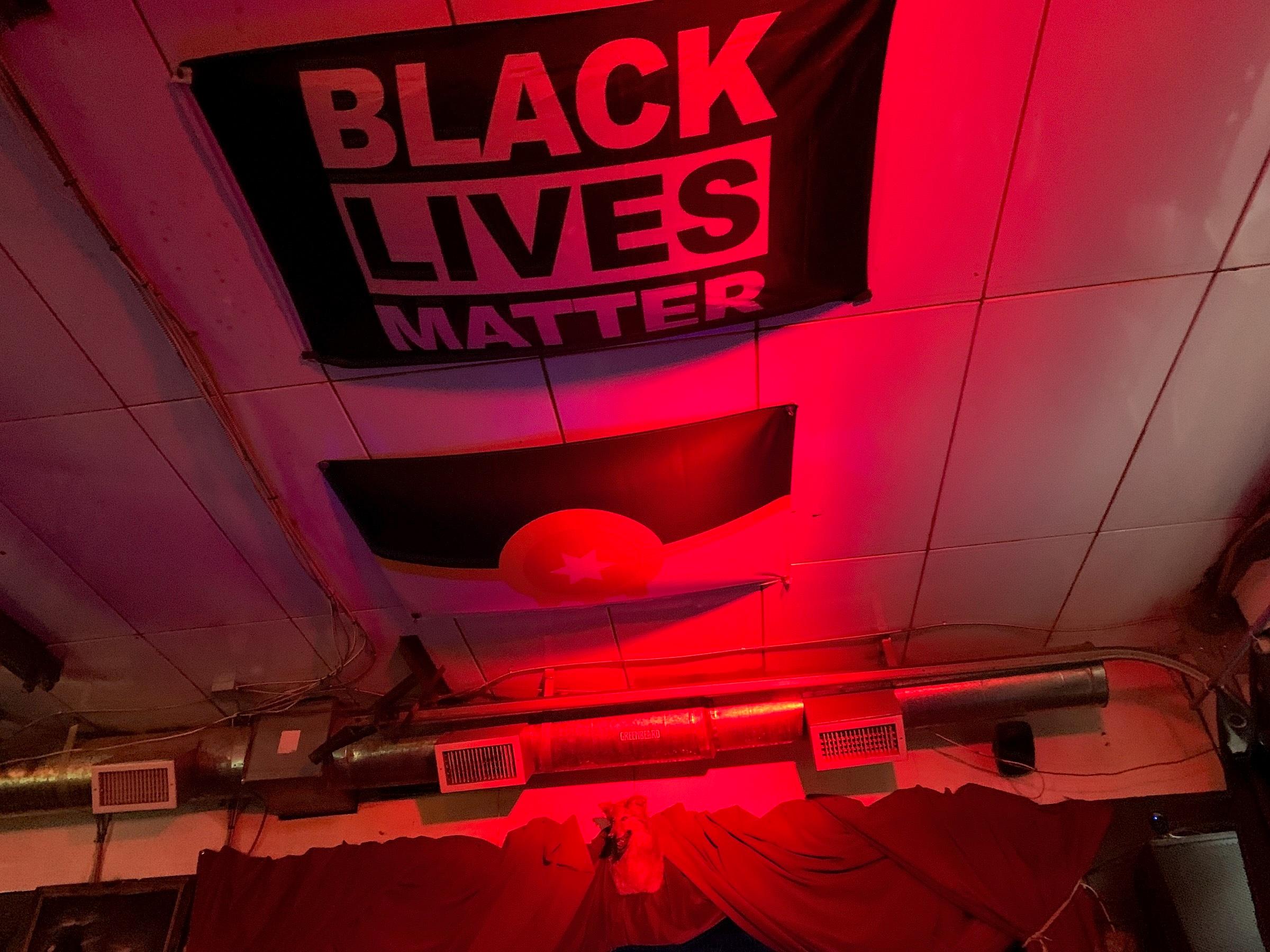
Flags and banners and signs covered the walls inside the packed barroom. The pride flag hung next to the U.S. Navy flag. Another sign reminded patrons that the establishment sits on Native land. A Black Lives Matter flag stared down from the ceiling … as did numerous stuffed critters, including that possum.
Eric, a proud Mercury regular who had overheard Big Chris’s deadpanned promise, noted that the possum is dropped once a year — on New Year’s Eve.
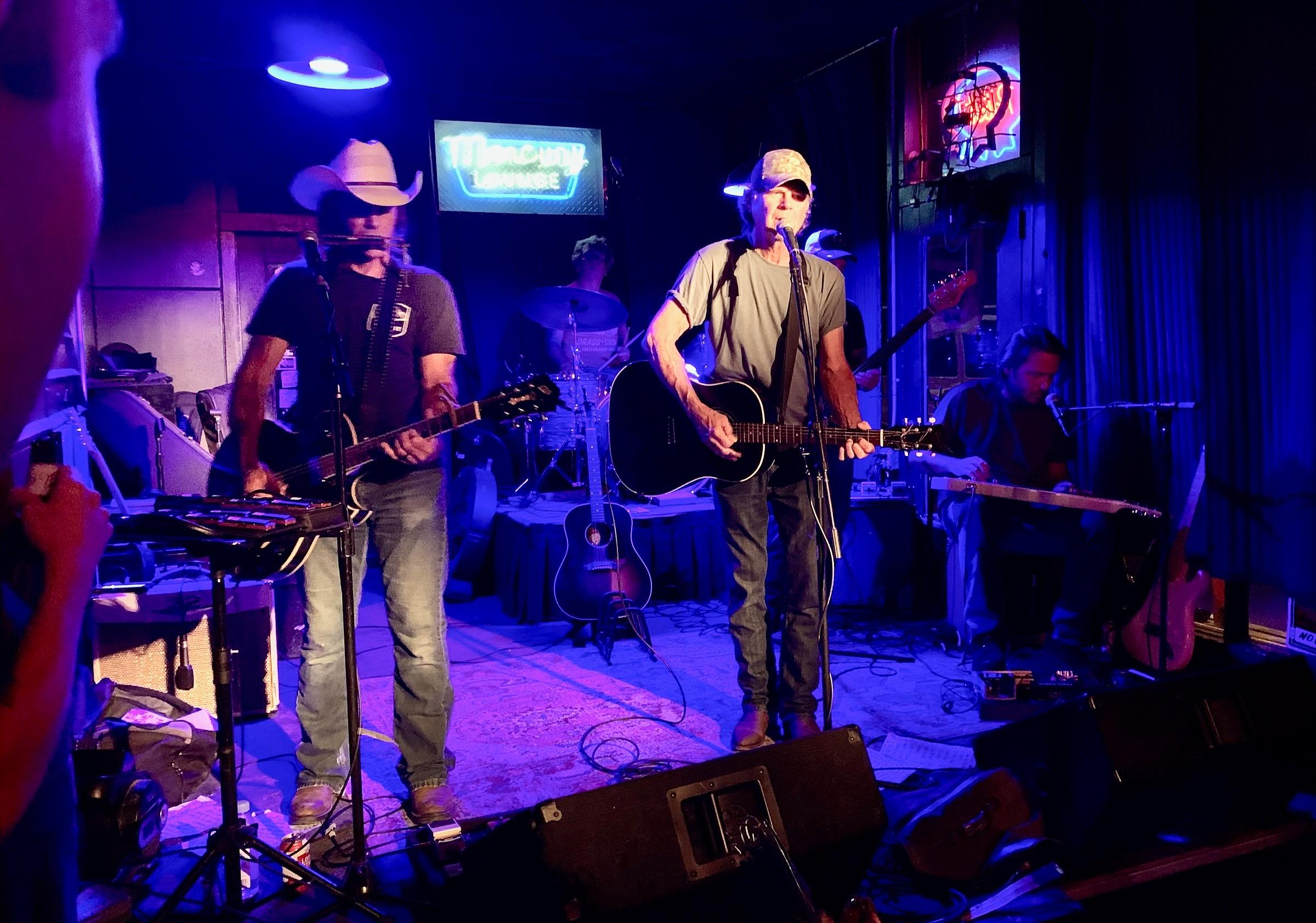
Eric joined the crowd standing up front, steps away from Knight and his band (pictured) as they chugged through a spirited set of rocky, hard-bitten story-songs reminiscent of John Prine.
I was struck by the warm feeling in the room — and by the quality of the sound. It filled the room without overpowering. Each instrument’s notes were identifiable; even a sexagenarian like myself had no need to stuff toilet paper in my ears.
Eric told me the Mercury is one of the reasons he loves living in Tulsa. I mentioned that people have begun predicting that the city will become the next Austin.
“I heard that,” he said, then added: “I hope not.”
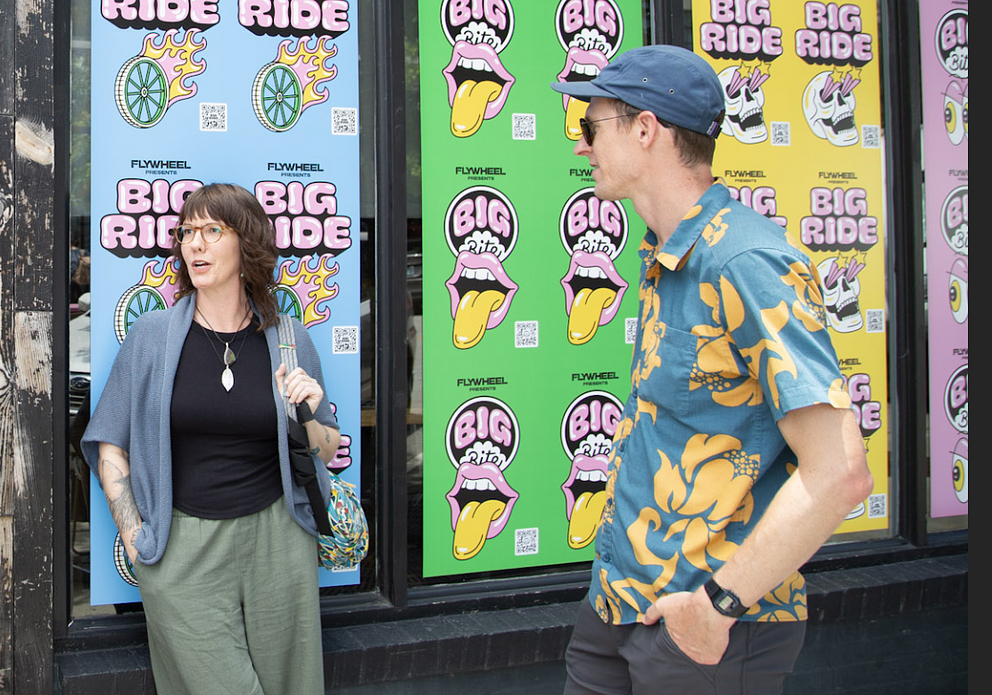
He and we will be able to track whether or not that happens: One of the former alt-weekly reviewers we met, Alicia Chesser, signed on to lead a local crew of reviewers for the Independent project. Another, Matt Carney, will publish the reviews locally in an arts-oriented events newsletter Chesser edits for him. (They’re pictured above.)
Tulsa will be among several cities we eventually choose where reviewers will contribute daily or near-daily articles for our new project (in addition to correspondents filing less frequently from other communities). The project will informally begin today with four weeks of sample reviews from around the country, then formally launch after Labor Day with a final set list of locations and far-flung fellows. Please let us know (at the “e‑mail the author” button at the top of this story) what you think and any ideas you have!
